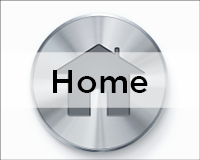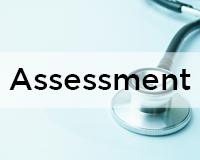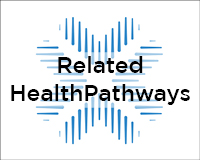
Background
About the non-prescribed use of AAS and other PIEDs
Performance and image enhancing drugs (PIEDs) [1] are drugs used to enhance the appearance of a person and/or to improve their physical capabilities such as strength or endurance.
- The term represents a wide range of substances (see the other types of PIEDs section), but the oldest and largest group are non-prescribed anabolic-androgenic steroids (AAS), which have been used since at least the late 1940s [2].
- The term PIEDs is generally used as people who use non-prescribed AAS commonly use other enhancement substances.
- There are numerous types of AAS (e.g. testosterone, boldenone, nandrolone and stanozolol) with different strengths and actions on the body. Exchange Supplies offers an informative poster of the most common AAS and other PIEDs used, including common dosages. The PDF is freely accessible HERE.
PIEDs fall under the broader category of human enhancement drugs (HEDs)[3]. HEDs may be divided into six categories:
- Muscle drugs (e.g. anabolic-androgenic steroids);
- Weight-loss drugs (e.g. 2,4-Dinitrophenol)
- Hair and skin enhancing drugs (e.g. Melanotan II);
- Sexual enhancers (e.g. sildenafil);
- Cognitive enhancers (e.g. methylphenidate); and
- Mood and behaviour enhancers (e.g. beta blockers).
Muscle enhancers, weight-loss drugs and image enhancing drugs are the three categories commonly referred to as PIEDs, or better known in elite sport as ‘doping substances’.
PIEDs are generally considered a subset of HEDs, as these substances are strongly associated with sport and fitness and tend to include substances that improve sporting performance and/or physical appearance as opposed to for example enhancing cognition.
On and off cycles:
- AAS are mostly used in cycles with a duration between 6 and 18 weeks, termed an ‘on cycle’. This is usually followed by a similar period of AAS-free training termed the ‘off cycle’.
- The rationale behind this strategy is to gain muscle mass and strength during an on cycle, allowing the body to recover between on cycles. There is limited empirical evidence to support the effectiveness of this approach.
Blast and cruise:
- ‘Blast and cruise’ is the continuous use of AAS involving a higher dose – the blast – for a set period, followed by a lower dose – the cruise – for a set period.
- This rotation can continue for an extended period (up to several years) and due to the lack of any off-cycle this approach may potentially increase health risks[4] associated with testicular shutdown.
Stacking:
- People who use non-prescribed AAS typically “stack” the drugs, meaning that they are taking 2 or more types of AAS and mix oral and/or injectable types.
- The belief is that different types of AAS interact to work synergistically in addition to complementing the varied half-lives and duration of action of specific AAS. There is no empirical evidence to support the effectiveness of stacking.
Post-cycle therapy (PCT):
- A primary concern of AAS use is its potential to suppress natural testosterone production. In response, some consumers will use other pharmaceutical substances during or after cessation of use of AAS (i.e. off/post cycle) to help restart natural testosterone production (e.g. Tamoxifen and Anastrozole to prevent gynaecomastia).
- There is limited empirical evidence to support the effectiveness of current PCT approaches.
Spot injecting:
- The injecting of AAS into smaller muscles. Some people who use non-prescribed AAS will inject it into smaller muscles (typically pectorals, biceps, triceps or calf muscles) as they believe that it makes that particular muscle grow bigger.
- This practice should be discouraged. It is important to explain to a patient that AAS do not cause localised muscle growth and that spot injections can increase the risk of complications.
Population studies indicate that the prevalence of non-medical use of AAS in Australia is relatively low, but is steadily increasing (0.3% in 2001, 0.8% in 2019[5])
There are other indicators that AAS use is a growing concern: e.g.
- The Australian Needle Syringe Program survey National Data Report shows a significant increase in PIEDs as ‘last drug injected’ in NSW over the period 1995-2019; from 1% to 10%.
- The 2017 Australian Secondary Students’ Alcohol and Drug Survey (ASSAD) report shows that 2% of secondary school students report using AAS or other enhancement drugs in their lifetime, with 1% reporting use in the past month.
Motivations for using non-prescribed AAS and PIEDs vary but the most common reported reason is for aesthetic purposes (changing their body image or for cosmetic purposes)[6].
Other reported motivations are:
- For recreational and competitive bodybuilding;
- To enhance sport performance;
- To enhance occupational performance (e.g. security staff who uses AAS to become stronger);
- Hormone replacement therapy
- Retaining youthfulness
- For anti-aging purposes.
- To aid injury pain/anxiety/increase confidence
- Between the ages of 20 and 24 years old – use can start as early as 14 years of age (rare).
- Older men (40 and over) who start using non-prescribed AAS for anti-aging purposes[7].
AAS used for non-medical reasons are generally injected or taken orally (although they are also available in gels, patches and depot injections), depending on the product and it is common to see people using a mixture of both injectable and oral products[8].
Both routes of administration carry risks, either via the injecting process (e.g. infection), or liver dysfunction caused by using oral products.
Injectable AAS are injected intra-muscularly (although there are reports of subcutaneous injections), typically into the gluteus (i.e. buttocks), outer thigh or shoulder.
- Some other PIED, such as human chorionic gonadotrophin and human growth hormone (HGH), are used subcutaneous.
Patient Resources:
People who use non-prescribed AAS often use other types of PIEDs and illicit substances to (1) achieve augmented effects, (2) to minimise adverse effects of AAS use, and (3) for recreational purposes[9]. Some commonly used substances are (list not exhaustive)[10]:
| Drug | Trade/other names | Purported reasons for use (by patients) [11] |
|---|---|---|
| Tamoxifen | Nolvadex® | Tamoxifen (oral) is used as an oestrogen blocker. This is used to prevent gynaecomastia (growth of glandular breast tissue in males) |
| Anastrozole | Arimidex® | Anastrozole (oral) is used as an oestrogen blocker. This is used to prevent gynaecomastia |
| Human chorionic gonadotrophin (HCG) | Pregnyl® | HCG (injected) is used to minimise depressive symptoms upon AAS cessation/withdrawal, to improve testosterone production, to prevent weight-loss, to stop testicular atrophy, and to increase strength. |
| Clomiphene citrate | Clomid® | Clomid (oral) is taken to ‘kick start’ the endogenous production of testosterone during an ‘off cycle’, as testosterone production is often shutdown due to high-levels of exogenous AAS. |
| Human growth hormone (HGH) | Somatropin | HGH (injected) is used for its anabolic effects and strength and for weight loss. |
| Ephedrine | Ephedrine (oral) is used to increase energy and boost training, and to enhance weight loss | |
| Clenbuterol | Spiropent® | Clenbuterol (oral), a β2 agonist, is used for its anabolic effects, burning fat properties and for weight-loss purposes. |
| Diuretics | Furosemide Spironolactone | Diuretics (oral and injectable) are used for a variety of reasons, including to treat water retention caused by certain types of AAS; to enhance muscular definition; and, in competitive sport, to mask doping drugs and to drop in weight category. |
| 2,4-DNP | 2,4-dinitrophenol | 2,4-DNP (oral) is used for fat burning purposes and to reduce weight (DNP is highly toxic even in small doses). DNP is not licenced for human consumption. |
| Melanotan II | Melanotan II (injected) is mainly used as a tanning agent but also used for enhancement of sexual arousal. | |
| Insulin | Insulin (injected) is used for its anabolic effects and strength, to burn fat, and for weight loss purposes. | |
| Selective androgen receptor modulator (SARMs) | Examples: Ostarine (MK-2866) Ligandrol (LGD-4033) Testolone (RAD-140) Andarine (GTx-007, S-4) | SARMs mimic the muscle building effects of AAS (by binding to androgen receptors), with supposedly less side effects than AAS. There is however no empirical evidence to support this claim. The use of SARMS is rare compared to AAS. |
| Gamma hydroxybutyrate (GHB) | Recreational drug (oral and injectable); in an attempt to increase growth hormone secretion used to enhance sleep. | |
| Alcohol | Legal drug (oral); used for better sleep and relaxation. | |
| Stimulants | Common ones: Cocaine Amphetamine | Recreational drug (snorted and injectable); also used to boost training, alertness, to enhance performance and psychological wellbeing. |
| Cannabis | Marijuana Weed | Recreational drug (smoked/oral); also used for relaxation and to manage pain. |
The below provides an overview of the reported adverse effects of AAS use [12].
Cardiovascular
- Dyslipidaemia – atherosclerotic disease
- Cardiomyopathy
- Cardiac conduction abnormalities
- Coagulation abnormalities
- Polycythaemia (i.e. Erythrocytosis)
- Hypertension
Hepatic:
- Inflammatory and cholesteric effects
- Peliosis hepatis (rare)
- Neoplasm (rare)
Kidney:
- Renal failure secondary to rhabdomyolysis
- Focal segmental glomerulosclerosis
- Neoplasms (rare)
Neuroendocrine (males):
- HPT suppression – hypogonadism from AAS withdrawal
- Decreased spermatogenesis
- Infertility
- Gynaecomastia
- Prostatic hypertrophy
- Virilising effects
- Libido and other sexual function changes
Neuroendocrine (females):
- Amenorrhea
- Changes in the reproductive system
- Development of a more masculine physique; breast tissue atrophy, deepening of voice, coarse skin, and hirsutism (excessive hair growth)
Brain and cognition abnormalities
- Changes in brain volume and cortical thickness
- Reduced cognitive functioning (incl. speed of processing, working memory, problem solving and memory function)
- Neuronal apoptosis – cognitive deficits
Infectious (due to the methods of administration)
- Soft tissue & muscular abscesses
- HIV/Hepatitis risk
Musculoskeletal
- Tendon rupture
- Premature epiphyseal closure (in adolescents, rare)
Dermatologic
- Acne (in some cases severe)
- Striae
- Premature balding
Neuropsychiatric
- Mood disorders – mania, hypomania and depression
- Aggression
- Insomnia
- AAS dependence








